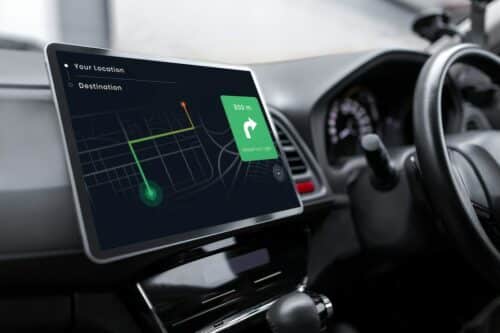Researchers at the Department of Computer Science at the University of Oxford, in collaboration with colleagues at Bogazici University, Turkey, introduced an artificial intelligence approach to achieve precise positioning of autonomous vehicles in bad weather conditions

Almalioglu and colleagues developed a new self-monitoring deep learning model for estimation of ego-motion, an essential component of an AV’s driving system that analyzes the moving position of the car relative to objects observed from behind the car itself. The model presents highly detailed information from visual sensors (which can be damaged due to adverse conditions) with data from weather-immune sources (such as radar) so that the benefits of each can be used under different weather conditions.
Yasin Almalioglu, who completed the research as part of her Ph.D. in Philology at the Department of Computer Science, said: “The difficulty for autonomous vehicles to achieve precise positioning during challenging adverse weather conditions is one of the main reasons why These have been limited to relatively small-scale trials until now. For example, weather such as rain or snow can cause an AV to be detected in the wrong lane before a turn, or to stop too late on a turn. intersection due to imprecise positioning”.
The researchers trained the model utilizing several publicly available AV datasets that consists of data from various sensors such as cameras, lidar, and radar in various configurations, including variable levels of light/darkness and precipitation. Calculation of the car position is performed by using novel data obtained from sensors, these data were used to generate algorithms to reconstruct the geometry of the scene. The researchers proved that the model exhibits exceptional performance in all types of weather, such as rain, fog, snow, etc.
Professor Niki Trigoni, from the University of Oxford’s Department of Computer Science, who co-supervised the study, said: “Precise positioning capability provides a foundation for numerous core functionalities of autonomous vehicles, such as motion planning, prediction, situational awareness, and collision avoidance”. This study provides an interesting add-on solution for the AV software stack to achieve this capability.”
Professor Andrew Markham (Department of Computer Science, University of Oxford), also a co-supervisor of the study, added: “Estimating the precise location of autonomous vehicles is a critical milestone in achieving reliable autonomous driving in challenging conditions. This study effectively harnesses the complementary aspects of different sensors to help autonomous vehicles navigate difficult daily scenarios.” The team aims that this invention would enable autonomous vehicles to autonomously drive safely and seamlessly in all weather conditions.
Click here for the Published Research Paper






